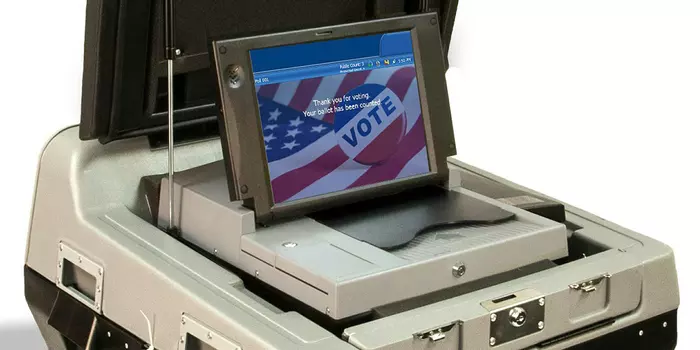The Cyber Guys: Critical Vulnerabilities in Voting Machines – Easy To Hack

J. Alex Halderman, a Computer Science professor at the University of Michigan, walks into a courtroom in Georgia. He borrowed a pen from the defense attorney and in under a minute he had broken into a Dominion voting machine where he could make the results anything that he wanted without a trace of his breach.
Dr. Halderman was an expert witness that demonstrated just how vulnerable these voting machines are to tampering. He used a pen to hold down the power button on the voting machine. He waited 7 seconds until it came up in “safe” mode. From there he could open files and change the contents of files to include the results and audit files without a password.
Later Dr. Halderman showed how with just a $30 purchase on Amazon, he was able to create a technician card for the voting machines that gave him super user access. Once programmed, a hacker could make as many technician cards as needed and distribute across the voting area.
At this point you might be thinking, OK, but how many computer science professors are going to hack a voting machine? Well, it turns out in August of 2018 at a DEFCON hackathon conference, it took an 11-year-old boy 10 minutes to hack a simulated Florida state voting website and change the results of the election. There was not just one child, but 30 of the 50 children with age ranging from 8 to 16 were able to hack the simulated election website.
Over the last 6 years there have been many lawsuits concerning the use of these machines all over the country. Not only in Georgia, but Pennsylvania, Michigan, Texas, Arizona, and more.
But it’s not just Dominion machines that have vulnerabilities. In the summer of 2020, students from the University of Pennsylvania conducted an audit of the ES&S voting system1. ES&S claims to be the world’s largest e-voting system vendor, supporting more than 67 million voter registrations with 97,000 touchscreen voting machines installed in 20 states, with optical ballot readers in 43 states.
The team reported numerous critical vulnerabilities existed in nearly every component of the ES&S system. They identified serious and undetectable attacks that could be carried out by poll-workers and even individual voters. What makes matters worse is that these attacks are not limited to the local machines. There are several attacks that propagate like a virus to the backend systems on the network affecting all the results of a precinct or an entire county. According to their report, virtually every mechanism for assuring the integrity of precinct results and backend systems can be circumvented. With these machines, they found that almost every major component of ES&S can be altered or replaced by other components with which it communicates. In other words, there are many ways to get to the back end to modify the results.
The calibration of the touchscreen affects how the voters’ input maps to different locations on the screen. If the calibration is incorrect, it could alter the voters’ choices. For example I vote for Alice for the school board on the touch screen, but the machine selected the opponent, Bob. This happened in Pennsylvania in the 2023 Superior Court election. When a voter would select ‘yes’ or ‘no’ on their ballot for one of the candidates, the vote was recorded on the paper ballot and the machine for the other candidate.
Some countries like Argentina and the Philippines have recently banned the use of the machines due to their vulnerabilities. There is talk in different states around the country about doing the same. What should we do to ensure that each voter’s choice counts?
The original article was published in the Sierra Vista Herald here.
